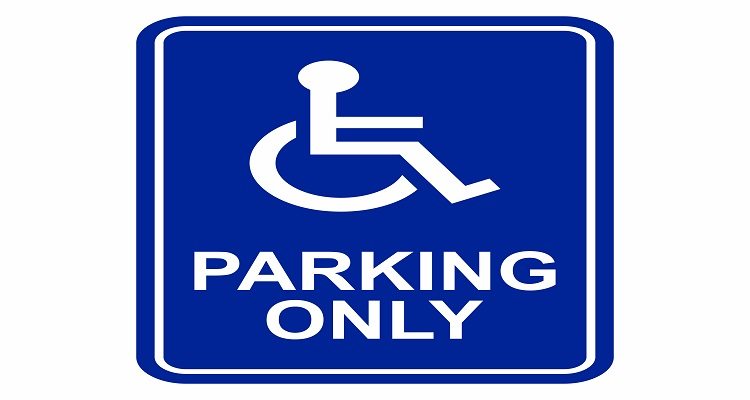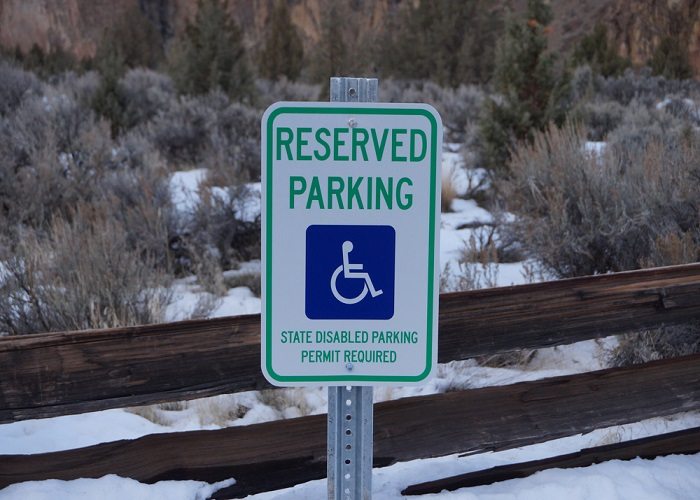Various Laws for Handicap Parking spaces

The Americans with Disabilities Act (ADA) does not allow discrimination against people with disabilities in many categories – employment, communications, access to state and government programs and services, accommodations for the public and even transportation. The law was amended in 2008 to establish the rights of persons with disabilities to be able to access building entrances and public parking spaces. The ADA now has specific guidelines as well as regulations for the creation of handicap parking spaces.
The ADA specifies the location, the size and the number of handicap parking spaces in both private as well as public parking lots. However, every state and territory also has its own set of laws with regard to applying for, possessing disabled license plates and placards and the fees that is incurred for this entire process.
Laws for Parking Spaces
- Location of Handicap Parking spaces
According to the ADA, spaces for handicap parking must be located closest to the building entrances near the parking lot. If there are no building entrances nearby, then the space should be located as close to the building elevator as possible.
If there is no building next near the parking lot, then the handicap parking space must be located next to the pedestrian walkway that leads into and out of the parking lot.

How many handicap parking spaces should there be in a parking lot?
This depends on the total number of parking spaces in that lot. Here is the break-down of how many parking spaces there should be:
- For smaller lots with up to 100 parking spaces, there needs to be 1 handicap parking space for every 25 regular spaces.
- For medium sizes lots, spaces between 101 to 500 need to 1 handicap parking space for every 50 slots. This means that the parking lot would have 4 slots for the first 100 spaces and then 1 more for every 50 extra spaces.
- For very large parking lots with a capacity of 501 to 1000 spaces, there need to be 2% of the spaces reserved for handicap parking.
- Parking lots that have more than 1000 spaces, then 20 spaces need to be reserved for handicap parking. Additionally, 1 extra handicap space needs to be made available for every 100 spaces over 1001.
- For every 8 handicap parking spaces, 1 space for a handicap van should be available. If there is only one handicap parking space, then it should be big enough to accommodate a van too.
- Size of Handicap Parking spaces:
The ADA also specifies the size of each handicap parking space. Each space has to be 8 feet wide. Parking spaces for vans need to have a height clearance of at least 98 inches. The gap (no parking space) between each slot should be 5 feet wide on each side. The van parking space should have a gap of at least 8 feet on each side.
Disability License Plates and Parking Placards
If you have a disability because of which you cannot walk or your safety is put at risk if you do walk, then the Department of Motor Vehicles in your state will be able to provide you with a placard that allows you the use of handicap parking spaces in parking lots.
If you have a permanent disability, then you can even apply for a disability license plate.
Both the plates and the placards have the International Symbol of Access on them so you can use the handicap parking spaces anywhere in the US as well as other countries.
Eligibility for License Plates and Parking Placards
If you are temporarily disabled, then you are eligible to apply for a temporary parking placard. These placards are usually only valid for up to 6 months, though this time frame may vary from state to state. You need to have your physician or any other medical professional (as mandated by the state in which you reside) fill out the disability form and also mention the amount of time you will probably be disabled.
If you are permanently disabled, you can apply for a permanent parking placard, which is valid for up to 3 years.
Disabled parking plates are only available for permanently disabled people.











